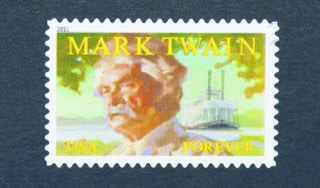
I love the fact that our industry is evolving in surprising and hard-to- predict ways. That’s the way of complex adaptive ecosystems, of which the life sciences industry is a good example.
As Edward Lorenz’s anecdote (the one about a flapping butterfly causing a hurricane) is meant to convey, in a complex system you can’t easily predict where current events will lead to. But that doesn’t mean we’re blind to the future. We can look carefully for early signs of the system’s ’emergent properties’, those small changes that portend the future. Even better, the industry’s history can, if we know it well, point to where to look for these pointers to the future. As usual, let me digress a little before I return to the practical implications.
History rhymes
You might have heard Mark Twain’s aphorism that history doesn’t repeat itself, but it rhymes. In fact, there’s no evidence he said this and he wasn’t credited with it until decades after his death, but that hardly matters. It’s a popular saying exactly because it resonates with what we observe in real life. Veterans of the industry observe today’s firms making remarkably similar mistakes to those of decades ago, even if the details are different. More positively, the fundamental characteristics of today’s successful launches mirror those of past blockbusters, even though the therapy areas and science might be different. Most of us, when trying to anticipate what will happen in our market, look for patterns in the past that might be echoed in the future. And recently, as I worked with a client to anticipate the future, it looked as if history was indeed pointing us towards an emergent property of tomorrow’s pharmaceutical industry.
The antibiotic transformation
It’s a truism that antibiotics changed the world. Our current worries about resistant organisms only serve to remind us of a pre-antibiotic world when people could die of a scratch. But antibiotics didn’t only transform the lives of patients. They had a marked effect on the structure of the industry. Up until the 1940s, the US had been a follower in the pharmaceutical industry, which was dominated by Germany and Switzerland. The US pharmaceutical industry was, broadly speaking, fragmented, small-scale and low margin. In its business models, it was closer to its chemical industry roots than to today’s research-intensive, high-margin business. WWI’s forced acquisitions helped it along a bit and the destruction of Germany’s industry in WWII helped a little more, but there’s another causative factor to US pharma’s post-war ascendence that is often forgotten. When the wartime allies needed the new antibiotics in vast quantities, they selected a few companies, and forced them to cooperate in what is known as the penicillin collaborative. Not only did this achieve the desired result – accelerated research and development and scale-up – it also made those few companies highly successful. It taught them new ways to bring new drugs to market and then rewarded them with exceptionally large cashflows and profits that, pre-war, would have been unimaginable. These pots of cash were used to exploit and drive the therapeutic revolution of the post-war period. This in turn shaped the industry in a way that is still mostly recognisable today.
Rhyming RNA
I hope you enjoyed that micro-history lesson, but the point of my story is how that episode may rhyme with the near future. The COVID-19 pandemic has been compared to a wartime situation many times. And the apparently instant, but in fact long time coming, arrival of the marvel of mRNA vaccines has been compared to the miracle of antibiotics. But what makes the rhyme is less the pharmaceutics and more the economics. Government intervention strongly directed the last stages of bringing the vaccines to market and a few lucky and competent companies – especially Pfizer/BioNTech and Moderna – find themselves with new capabilities and looking at windfalls of cash they would have only dreamed of a few years ago. And now we are beginning to see that influence on the future of the industry. Pfizer – forecasting about $26bn in COVID-19 revenue – is spending money on everything from scale-up facilities to oral COVID-19 drugs. BioNTech looks like it will use its profits to boost its original mission in oncology. Moderna is using its cash to try to become an RNA vaccine leader. The differences between the 1940s and the 2020s are important, but the similarities are telling.
Watch this space
Because history doesn’t repeat but rhymes, we can’t say exactly what the consequences of COVID-19 will be for the industry’s long-term structure. They may not be of the scale of the antibiotic transformation that our parents and grandparents saw. But it would be naïve to not anticipate some important rhyming consequences when, as in the 1940s, great sums of money are being given to only a few companies at a time when the scientific possibilities create opportunities to exploit. Watch this space.




